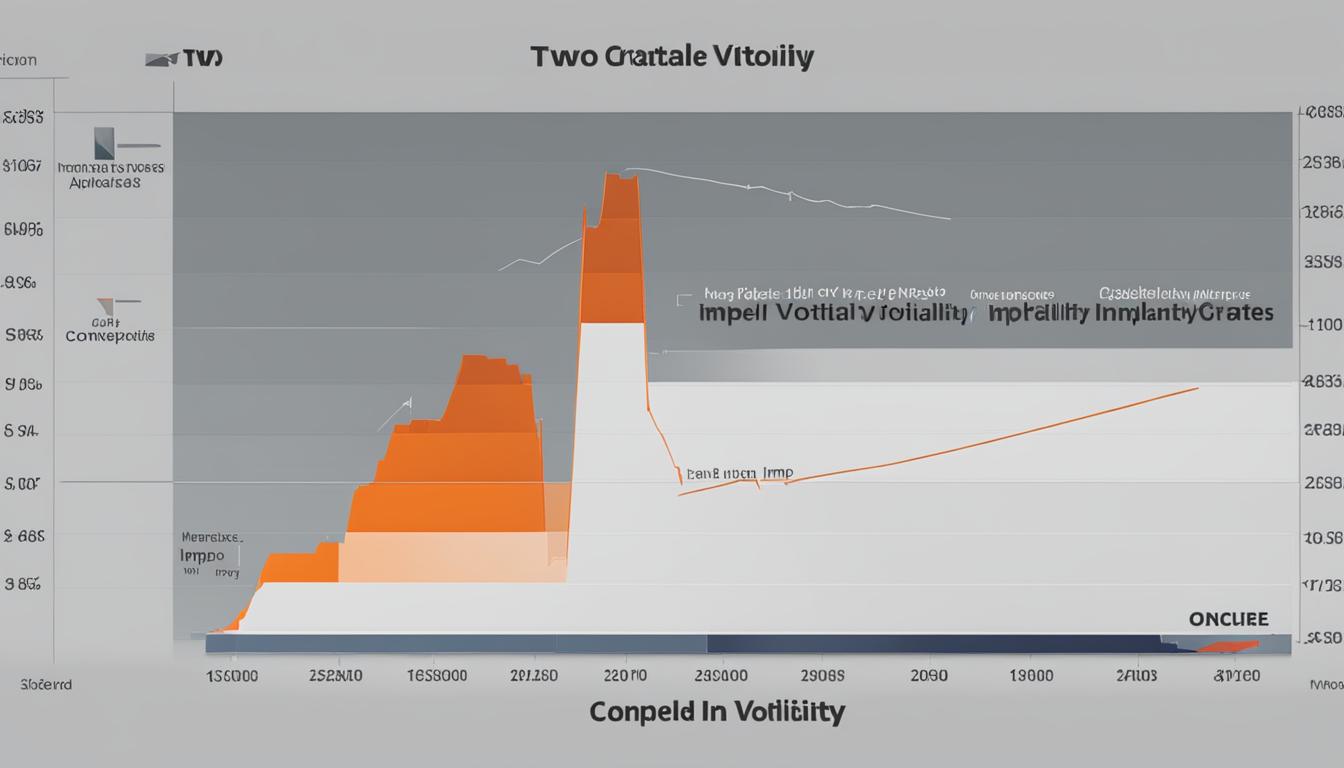From Novice to Expert: How to Dominate the Stock Market Using Momentum Trading Techniques

Are you ready to unleash the power of momentum trading and navigate the stock market with confidence? In this comprehensive guide, we will walk you through the essential strategies, technical indicators, and analysis techniques that can turn even a novice trader into an expert. Get ready to discover the secrets of momentum trading and unlock your full potential in the stock market.
Key Takeaways:
- Momentum trading is a strategy that capitalizes on directional trends in stock prices.
- Technical analysis and momentum indicators play a crucial role in identifying entry and exit points.
- Finding momentum stocks can be done through stock scanners and market analysis tools.
- Chart patterns like bull flags and flat top breakouts can indicate strong momentum.
- Risk management is essential for protecting capital and managing potential losses.
What is Momentum Trading?
Momentum trading is a strategy that focuses on stocks that are moving and making significant price moves. It involves buying stocks that have shown a strong upward or downward price movement in the hope that the momentum will continue. This strategy can be applied to various timeframes, from short-term swing trading to longer-term position trading. Traders use technical analysis and momentum indicators to identify stocks with strong momentum and potential profit opportunities.
Momentum trading is a popular approach in stock market trading, as it allows traders to capitalize on the directional trends in stock prices. By identifying stocks with strong momentum, traders can take advantage of the upward or downward movement and potentially profit from it. This strategy is often used in swing trading, where traders aim to capture shorter-term price moves, as well as in longer-term position trading, where traders look for stocks with sustained momentum over a longer period.
Traders rely on technical analysis and momentum indicators to identify stocks with strong momentum. Some popular momentum indicators include the Moving Average Convergence Divergence (MACD), Relative Strength Index (RSI), and the Stochastic Oscillator. These indicators help traders gauge the strength and direction of price momentum, allowing them to make informed trading decisions.

What is Momentum Trading?
Momentum trading is a strategy that focuses on stocks that are moving and making significant price moves. It involves buying stocks that have shown a strong upward or downward price movement in the hope that the momentum will continue. This strategy can be applied to various timeframes, from short-term swing trading to longer-term position trading. Traders use technical analysis and momentum indicators to identify stocks with strong momentum and potential profit opportunities.
Momentum trading is a popular approach in stock market trading, as it allows traders to capitalize on the directional trends in stock prices. By identifying stocks with strong momentum, traders can take advantage of the upward or downward movement and potentially profit from it. This strategy is often used in swing trading, where traders aim to capture shorter-term price moves, as well as in longer-term position trading, where traders look for stocks with sustained momentum over a longer period.
Traders rely on technical analysis and momentum indicators to identify stocks with strong momentum. Some popular momentum indicators include the Moving Average Convergence Divergence (MACD), Relative Strength Index (RSI), and the Stochastic Oscillator. These indicators help traders gauge the strength and direction of price momentum, allowing them to make informed trading decisions.
The Basics of Momentum Trading
Momentum trading is a strategy that relies on identifying stocks with significant price movements, also known as momentum stocks. These stocks have shown consistent upward or downward movement, indicating the potential for further price increases or decreases. Traders use various indicators to gauge the strength of price momentum, with one popular indicator being the Relative Strength Index (RSI).
The RSI is a technical indicator that measures the speed and change of price movements. It compares the magnitude of recent gains to recent losses and generates a value between 0 and 100. A reading above 70 suggests that a stock is overbought and may be due for a pullback, while a reading below 30 indicates that a stock is oversold and may be poised for a rebound.
By identifying stocks with strong price momentum and using indicators like the RSI, traders can enter positions in the direction of the trend, increasing their chances of making profitable trades. It’s important for traders to conduct thorough research and analysis to accurately identify momentum stocks and make well-informed trading decisions.
Table: Examples of Momentum Stocks
| Stock | Ticker Symbol | Price | RSI |
|---|---|---|---|
| XYZ Corp | XYZ | $50 | 75 |
| ABC Inc | ABC | $65 | 80 |
| 123 Co | 123 | $40 | 25 |
Table: Examples of momentum stocks showcasing their current price and RSI values. These stocks have demonstrated strong price momentum and may present potential trading opportunities for momentum traders.
Finding Momentum Stocks
When it comes to momentum trading, finding the right stocks to trade is essential. Traders employ various strategies to identify stocks with strong price momentum and potential for profitable moves. One popular approach is to use stock scanners, which are powerful tools that scan the market for stocks that meet specific criteria.
Stock scanners allow traders to set parameters based on their trading strategies, such as high relative volume or specific fundamental catalysts. By focusing on these criteria, traders can filter out stocks that lack momentum and concentrate on those with the potential for significant price moves.
“Stock scanners are like the detective tools of momentum traders. They help us uncover the hidden gems in the market, those stocks that are gaining momentum and have the potential for big moves. With a reliable stock scanner, we can save time and energy by letting the software do the hard work of finding the best opportunities.”
By utilizing stock scanners, traders can quickly identify momentum stocks that match their trading strategies. With access to real-time data and customizable search parameters, these tools provide traders with an edge in finding profitable trading opportunities.

Table: Characteristics of Momentum Stocks
| Criteria | Description |
|---|---|
| Relative Volume | Stocks with higher-than-average trading volume compared to their historical average |
| Price Breakouts | Stocks that have broken out of key price levels or chart patterns |
| Fundamental Catalysts | Stocks with positive news or events that can drive momentum |
| Strong Trends | Stocks that have been consistently moving up or down over a period of time |
Table: Characteristics of Momentum Stocks
By considering these factors and using stock scanners, traders can increase their chances of finding momentum stocks that have the potential to generate significant profits. However, it’s important for traders to conduct further analysis and due diligence before entering any trades, as momentum can change rapidly in the stock market.
Chart Patterns for Momentum Trading
Chart patterns play a crucial role in the success of momentum trading strategies. These patterns provide valuable insights into potential trading opportunities, allowing traders to identify and capitalize on momentum shifts in the market. Two popular chart patterns used in momentum trading are the bull flag and the flat top breakout pattern.
The Bull Flag
The bull flag pattern occurs when a stock experiences a period of consolidation after a strong upward move. This pattern is characterized by a short-term downward or sideways movement, forming a flag-like shape on the chart. Traders look for a breakout from the bull flag pattern as a signal of continued momentum in the upward direction. The breakout is typically accompanied by increased trading volume, confirming the strength of the upward trend.
The Flat Top Breakout Pattern
The flat top breakout pattern is another chart pattern that indicates potential momentum in a stock. This pattern occurs when a stock reaches a resistance level and fails to break above it multiple times, creating a flat top on the chart. Traders wait for a decisive breakout above the resistance level, which signals a potential surge in momentum and a strong buying opportunity. Like the bull flag pattern, the breakout from the flat top pattern is often accompanied by a notable increase in trading volume.
By recognizing these chart patterns and understanding their significance, momentum traders can effectively identify potential entry and exit points. It is important to combine these patterns with other technical indicators and analysis tools to confirm the validity of the signals and maximize the chances of success in momentum day trading.

| Chart Pattern | Description | Signal |
|---|---|---|
| Bull Flag | A short-term consolidation period after a strong upward move | Breakout above the flag pattern, accompanied by increased volume |
| Flat Top Breakout | A stock reaches a resistance level and fails to break above it multiple times, creating a flat top | Decisive breakout above the resistance level with increased trading volume |
Risk Management in Momentum Trading
Effective risk management is paramount in momentum trading to protect capital and mitigate potential losses. Traders employ various strategies, including setting stop-loss orders and considering the profit-loss ratio, to manage risk effectively. Implementing these risk management techniques helps traders maintain discipline and make informed decisions while trading with momentum indicators.
Stop-Loss Orders
A stop-loss order is a predetermined price level at which a trader exits a trade to limit potential losses. By setting a stop-loss order, traders establish a point at which they are willing to accept a loss and exit the position. This risk management tool allows traders to protect their capital and avoid excessive losses if the trade goes against their expectations.
Traders should consider various factors when setting stop-loss orders, such as the volatility of the stock, the overall market conditions, and the trader’s risk tolerance. It’s essential to strike a balance between setting a stop-loss level that protects against significant losses while also allowing for potential price fluctuations.
Profit-Loss Ratio
The profit-loss ratio, also known as the risk-reward ratio, is a measure of the potential profit compared to the potential loss of a trade. Traders aim to maintain a favorable profit-loss ratio by seeking opportunities where the potential reward outweighs the risk. It is vital to have a profit-loss ratio that aligns with the trader’s risk tolerance and trading style.
For example, a trader might aim for a profit-loss ratio of 2:1, meaning that for every dollar risked, they expect to make two dollars in profit. By maintaining a consistently favorable profit-loss ratio, traders can potentially offset losses with profitable trades over time, improving their overall trading performance.
By utilizing stop-loss orders and considering the profit-loss ratio, traders can effectively manage risk in momentum trading. These risk management techniques help traders protect their capital and make informed trading decisions based on their risk tolerance and market conditions.

Best Times of Day for Momentum Trading
Timing is crucial in momentum trading as it can greatly impact the success of your trades. While there are opportunities throughout the trading day, certain times tend to offer better conditions for momentum trading. The best time to trade with momentum is generally during the first hour after the market opens. This is when trading volume and volatility tend to be higher, creating more opportunities for significant price moves and momentum.
During the first hour, as traders react to overnight news and market gaps, stocks often experience sharp price movements. This initial burst of activity can provide ample opportunities to capture short-term momentum and generate profits. It is essential to closely monitor the market during this time and be prepared to act quickly, as prices can change rapidly.
While the first hour after market open is typically the most active, traders should also be aware of news spikes and other events that can occur at any time throughout the trading day. These events can create increased volume and momentum in certain stocks, offering additional trading opportunities. Therefore, it is important to stay informed about market news and events that may impact the stocks you are trading.
Key points:
- The first hour after the market opens tends to offer the best opportunities for momentum trading.
- This period is characterized by higher trading volume and volatility, creating potential for significant price moves.
- Traders should also be alert to news spikes and other events throughout the trading day that can create increased volume and momentum in specific stocks.

| Trading Session | Market Hours |
|---|---|
| Pre-Market | 4:00 AM – 9:30 AM Eastern Time (ET) |
| Regular Market | 9:30 AM – 4:00 PM Eastern Time (ET) |
| After-Hours Market | 4:00 PM – 8:00 PM Eastern Time (ET) |
Analyzing Trading Results in Momentum Trading
When it comes to momentum trading, analyzing trading results is a fundamental aspect of refining trading strategies and improving overall performance. By closely examining the outcomes of trades, traders can identify patterns, strengths, and weaknesses in their approach, enabling them to make informed adjustments. The analysis of trading results provides valuable insight into the effectiveness of selected strategies and helps traders understand how they can optimize their momentum trading techniques.
One essential element to consider when analyzing trading results is the performance analysis. This involves tracking and evaluating key metrics such as entry and exit points, profit and loss, and relevant market factors. By meticulously recording these details, traders can identify specific areas where trading strategies may need adjustment or refinement. Additionally, performance analysis enables traders to assess the risk-reward ratio of their trades, ensuring that the potential gains outweigh the potential losses.
To effectively analyze trading results, traders can utilize various tools and techniques. They can create detailed tables to record trade data, including the date, stock symbol, entry and exit prices, and profit or loss. Graphs and charts can further enhance the visual representation of trading performance, showcasing trends and patterns that may otherwise go unnoticed. Additionally, incorporating technical indicators and performance metrics into the analysis process can provide valuable insights into the success of specific trading strategies.
Examining and analyzing trading results is essential for traders to refine their momentum trading techniques and improve their overall performance. By diligently tracking and evaluating trade data, traders can identify patterns, strengths, and weaknesses in their approach and make necessary adjustments to optimize their results. The insights gained from performance analysis enable traders to continually refine their strategies, ultimately increasing their chances of success in the dynamic world of momentum trading.
Table: Sample Trade Analysis
| Date | Stock Symbol | Entry Price | Exit Price | Profit/Loss |
|---|---|---|---|---|
| 01/05/2022 | ABC | 50.25 | 52.80 | +4.55% |
| 01/08/2022 | XYZ | 75.90 | 72.10 | -4.99% |
| 01/12/2022 | DEF | 34.75 | 36.90 | +6.17% |
The table above demonstrates a sample trade analysis, showcasing the date, stock symbol, entry and exit prices, as well as the resulting profit or loss. By systematically recording and evaluating trade data in this manner, traders can identify trends and assess the success of their chosen strategies. This level of analysis allows traders to refine their approach, continually improving their trading performance over time.
Choosing the Right Momentum Trading System
When it comes to momentum trading, choosing the right trading system is essential for success. With numerous options available, it’s important to consider factors such as trading capital, complexity, profitability rate, risk/reward ratio, and monthly returns.
One type of system that traders may consider is automated trading systems. These systems utilize algorithms and technical indicators to identify and execute trades automatically. They can provide traders with the advantage of speed and accuracy, as they can quickly analyze large amounts of data and react accordingly. However, it’s important to choose a system that offers reliable technical indicators and robust support, as well as the ability to customize strategies to fit individual trading preferences.
Technical indicators are essential tools in momentum trading systems. These indicators, such as moving averages, relative strength index (RSI), and stochastic oscillators, help traders identify trends, momentum, and potential entry and exit points. It’s important to choose a trading system that offers a wide range of technical indicators and allows traders to easily incorporate them into their trading strategies.
Choosing the right momentum trading system requires careful consideration of various factors, including trading capital, system complexity, and the availability of reliable technical indicators and robust support. Traders should also evaluate the profitability rate and risk/reward ratio of the system, as well as its monthly returns. By selecting a system that aligns with their individual trading preferences, traders can enhance their chances of success in momentum trading.
Table: A Comparison of Popular Momentum Trading Systems
| Trading System | Automated? | Technical Indicators | Profitability Rate | Risk/Reward Ratio | Monthly Returns |
|---|---|---|---|---|---|
| System A | No | Limited | Medium | 1:2 | 5% |
| System B | Yes | Extensive | High | 1:3 | 10% |
| System C | Yes | Customizable | Medium | 1:2 | 8% |
It’s important to note that trading systems, whether automated or not, are not foolproof solutions. Traders should always exercise caution, conduct thorough research, and continuously monitor and evaluate the performance of their chosen trading system. By regularly reviewing and adjusting their strategies, traders can adapt to market conditions and optimize their momentum trading activities.
Overall, choosing the right momentum trading system requires a comprehensive assessment of various factors. Traders should carefully consider their individual trading preferences, capital resources, and risk tolerance before selecting a system. By selecting a system that aligns with their goals and provides reliable technical indicators and support, traders can embark on their momentum trading journey with confidence.

Conclusion
Momentum trading is a powerful strategy that can enable traders to navigate the stock market and capitalize on price trends. By identifying stocks with strong momentum and using effective trading strategies, traders can enhance their chances of success in the market.
One of the key aspects of momentum trading is the ability to identify stocks that have shown significant price movements. This involves using technical indicators and analysis to determine entry and exit points. Traders can also leverage chart patterns and stock scanners to uncover potential opportunities for profitable trades.
However, it’s important to remember that risk management is crucial in momentum trading. Setting appropriate stop-loss levels and maintaining a favorable profit-loss ratio are essential to protecting capital and managing risk effectively.
In conclusion, momentum trading requires a combination of knowledge, skill, and discipline. By continuously analyzing trading results, refining strategies, and staying informed about market trends, traders can enhance their ability to dominate the stock market using momentum trading techniques.
FAQ
What is momentum trading?
Momentum trading is a strategy that focuses on stocks that are moving and making significant price moves. It involves buying stocks that have shown a strong upward or downward price movement in the hope that the momentum will continue. Traders use technical analysis and momentum indicators to identify stocks with strong momentum and potential profit opportunities.
How do traders find momentum stocks?
Traders use various methods to find momentum stocks. One popular approach is to use stock scanners, which are tools that scan the market for stocks that meet specific criteria, such as high relative volume or a fundamental catalyst like earnings announcements. These scanners help traders identify stocks that are exhibiting strong price momentum and have the potential for further price moves.
What role do chart patterns play in momentum trading?
Chart patterns play a crucial role in momentum trading. Traders look for specific patterns on price charts that indicate momentum and potential trading opportunities. One popular pattern is the bull flag, which occurs when a stock has a period of consolidation after a strong upward move. Traders look for a breakout from this pattern as a sign of continued momentum. Other patterns, like the flat top breakout pattern, can also indicate strong momentum and potential breakout opportunities.
How important is risk management in momentum trading?
Risk management is a critical aspect of momentum trading. Traders need to set appropriate stop-loss levels to limit potential losses. They also need to consider their profit-loss ratio, which is the ratio of potential profits to potential losses. By setting a stop loss and maintaining a favorable profit-loss ratio, traders can manage risk effectively and protect their capital while trading with momentum.
When is the best time of day for momentum trading?
Traders often find that the best time to trade with momentum is during the first hour after the market opens. This is when trading volume and volatility tend to be higher, creating more opportunities for momentum moves. However, traders should also be aware of news spikes and other events that can occur at any time, leading to increased volume and momentum in certain stocks.
How can traders analyze their trading results in momentum trading?
Analyzing trading results is crucial for momentum traders to evaluate their performance and refine their strategies. Traders should track their trades, including entry and exit points, profit and loss, and any relevant market factors. By analyzing their trading results, traders can identify patterns, strengths, and weaknesses in their approach and make necessary adjustments to improve their overall performance in momentum trading.
How do traders choose the right momentum trading system?
Momentum trading systems can provide traders with the tools and indicators they need to effectively trade with momentum. Traders should consider factors such as trading capital, complexity of the system, profitability rate, risk/reward ratio, and monthly returns when choosing the right system for their needs. It’s important to select a system that provides reliable technical indicators and robust support for optimal momentum trading.







